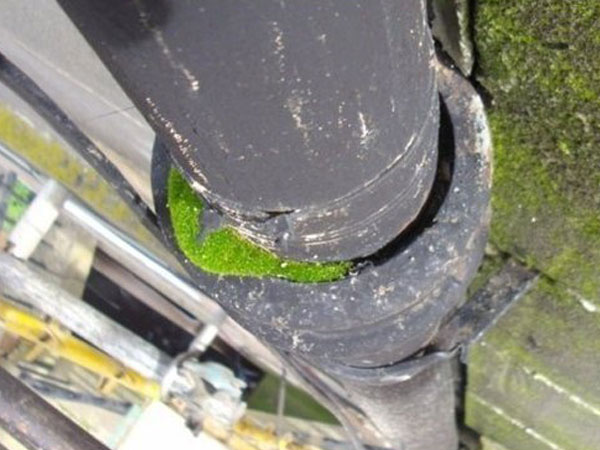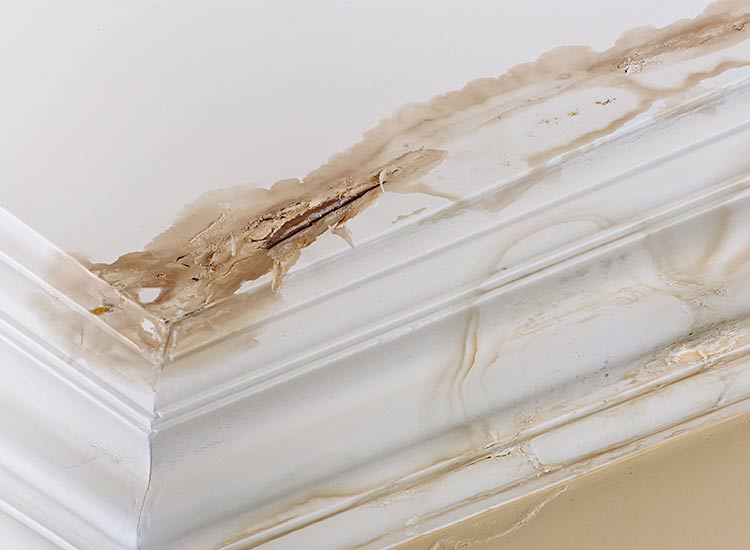What is Penetrating Damp?

Penetrating damp is one of the most common types of damp problems. If you are worried that your property is suffering from a dampness issue then this page will provide you with a quick guide explaining what is penetrating damp. This page will help you to gain a deeper understanding of what penetrating damp is and what the best penetrating damp treatments are. Deficiencies in the external envelope of your property can provide rainwater with access into your property. Damp in walls can have a profound impact on the internal aesthetics and fabric of your property, with visible damp patches and a musty smell having a considerably negative impact.
What Is Penetrating Damp?
Penetrating damp is moisture which gains access through walls or damaged roof coverings. Penetrating damp tends to be seen on the inside face of external walls and can appear as isolated damp patches which can increase in size after periods of rain. When rainwater comes into contact with the wall, saturation can occur if there is no waterproof or water repellent barrier like an external render. As a result, penetrating damp tends to occur more often to properties in regions which are badly exposed to poor weather conditions. This can affect all types of property and not just those in remote locations which are exposed to the elements or located on the seafront.Penetration through masonry in the form of moisture is a very common issue encountered by building owners. It is becoming a very common issue in buildings of cavity wall construction due to poor installation or inappropriate use of cavity wall insulation. In addition, moisture from rain can easily pass through mortar or obstructions in the cavity.
Penetrating damp can impact ceilings, walls and roofs and can occur on any level of your property. Older properties are much more vulnerable to such dampness as they are more likely than new builds to have solid walls. New build properties tend to have cavity walls which offer considerably more protection to the internal fabric and is unlikely to suffer from a penetrating damp issue. However, modern properties can still suffer from penetrating damp. Through inadequate design, porous masonry or defective cavity wall insulation, modern properties can also potentially suffer from penetrating damp.
What Causes Penetrating Damp?
The most important aspect of resolving a penetrating damp problem is accurately identifying the source of the problem. We have compiled a list below of the most common causes of penetrating damp. We have also provided various potential solutions which property owners could implement to resolve these problems.
Damage To The Roof Coverings – If you possess the relevant experience and capability, you should replace cracked or missing tiles in the roof. If flashing around chimneys or at roof joints appear to be loose or defective it is important it is refitted or replaced.
Damaged Or Blocked Guttering – This is the most common source of excessive water affecting your property and causing penetrating damp. Fortunately, it is a very simple fix with regards to stopping penetrating damp. Unblock the gutters or repair the deficiencies in your downpipes and gutters.
Damaged Windows – It is important to check window sills to ensure that drip grooves aren’t blocked. Grooves being blocked can easily result in moss and dirt building up over time. Upon identifying a blockage, ensure that you clean them thoroughly. If it is clear that your windows are defective or damaged you may need to replace them. Poor window pointing and putty can also allow damp to penetrate your property.
Weakened And Porous Bricks And Mortar – As time passes, bricks and mortar can become porous. If they have become porous this will provide water with an entry point into the property. If this is the cause of damp penetrating your property, it is crucial that you assess the defective area, repoint the masonry or apply a waterproof render or repellent to stop water penetrating the property.
Render Is Cracked – If the render is damaged in any way at all water can penetrate through. Any small cracks or bossed render should be patched using sealant or new render.
What Areas Can Get Affected by Penetrating Damp?
Buildings which have been built with solid walls are more susceptible to damp problems through moisture penetration in comparison to properties build with cavity walls. Cavity walls incorporate an air gap between the external and internal walls that ensures water cannot gain access to the interior of the property.
It is worth noting that cavity walls are not entirely protected from penetrating damp. Wall cavities can easily become blocked in places which can provide a bridge for damp to travel over to gain access to the inside of your property. Furthermore, many cavity walls have been fitted with insulation which fills the gap between the walls. When cavities are filled with insulation and the external leaf becomes porous and walls are forced to endure prolonged periods of heavy rainwater the damp can breach the external wall and soak the insulation. This wet insulation then transfers the moisture to the inner wall which can cause damp spots on the internal wall surface.
How to Identify Damp Penetration? What Are the Signs?
Penetrating damp can easily be identified as a watermark which appears close to the external envelope defects which is allowing damp penetration at windows, the roof and porous external walls. These damp patches will grow considerably if water continues to gain access and will become even more noticeable in the event of heavy rain. Mould may also be present alongside the damp on walls due to condensation affecting the cold damp wall area, but this will be dependent on the conditions within the property. Unlike rising damp, no hygroscopic salts will be present with penetrating damp.
Penetrating damp looks very unpleasing aesthetically and can result in costly structural repairs being necessary. In order to prevent considerable damage to your property, it is important you are familiar with the key signs of penetrating damp. This ensures you are able to deal with your dampness issue as quickly as possible. The key signs of penetrating damp include:
Damaged Plaster – Damp on walls will cause plaster to begin showing signs of disintegration.
Dampness Which Is Localised – You may notice localised patches of damp in random locations within your property which don’t dry out regardless of any techniques used.
Mould Growing – If there is mould visibly present in your property accompanies by a musty smell this could be an indication that your property is suffering from condensation as well as a penetrating damp problem.
Rotting Skirting Boards Or Floor Timbers – If these show signs of dry or wet rot decay on floors above the ground floor this could be caused by penetrating damp. If this occurs on only the ground floor it could be a rising damp issue or a combination of different damp problems including penetrating damp.
Penetrating Damp Treatment
Prior to carrying out any types of penetrating damp treatment, our specialists will carry out an extensive damp survey of your property. Upon establishing the source of damp penetration, we can utilise various building techniques to resolve your issue.
If your penetrating damp problem is so severe that the damp has soaked through your external walls into the living space of the property, we can use a specialist cavity membrane to help dry the area. This membrane system waterproofs the outside walls of the property and allows the original stonework and mortar to breathe during the drying out period. The external defect requires to be repaired to stop further damp getting to the wall.
Regardless of the age of your property, it can still potentially suffer from dampness. It is important to understand that treatments administered by property owners can frequently be unsuccessful due to misdiagnosis of the source of the damp problem. It is crucial to use specialists who will accurately diagnose the source of your problem, saving you time and money. Our qualified surveyors will visit your property, identify the damp source before evaluating the scale of repairs which is required.
What to Do Next?
If you suspect your property is suffering from penetrating damp, it is essential that you have a specialist undertake a damp survey. Richardson & Starling’s surveyors are fully qualified by the Property Care Association. Our specialists are highly trained in providing solutions to all forms of damp issues which your property may be affected by. Upon completion of the damp survey, our surveyor will provide you with a clear report detailing all of the problems they have identified during the survey. This will show the source of the problem and the treatments which require to be implemented to resolve the damp issue.

Not sure what is causing damp in your home? Contact your local branch for advice or a property survey to regain your peace of mind.
